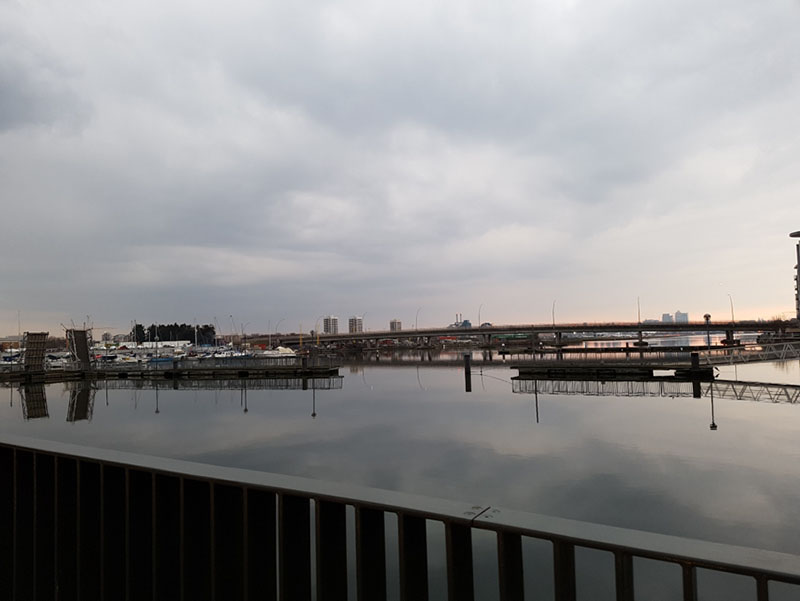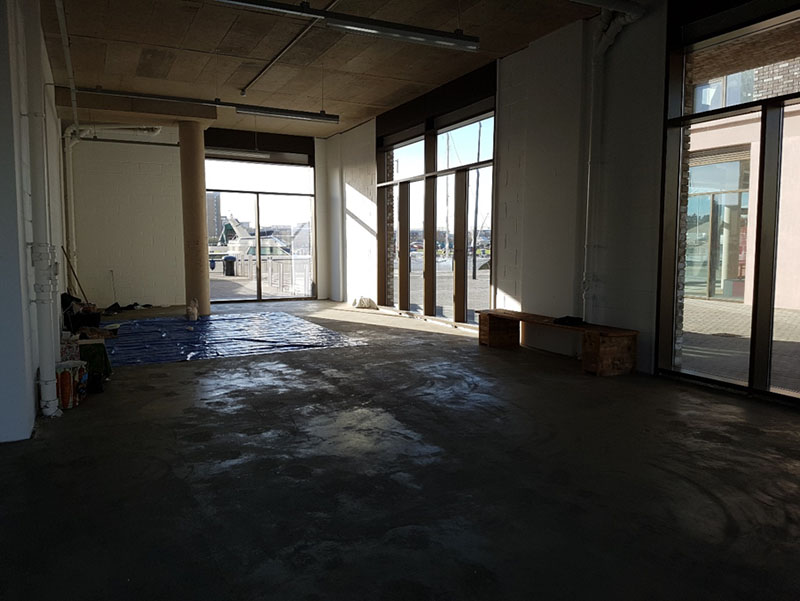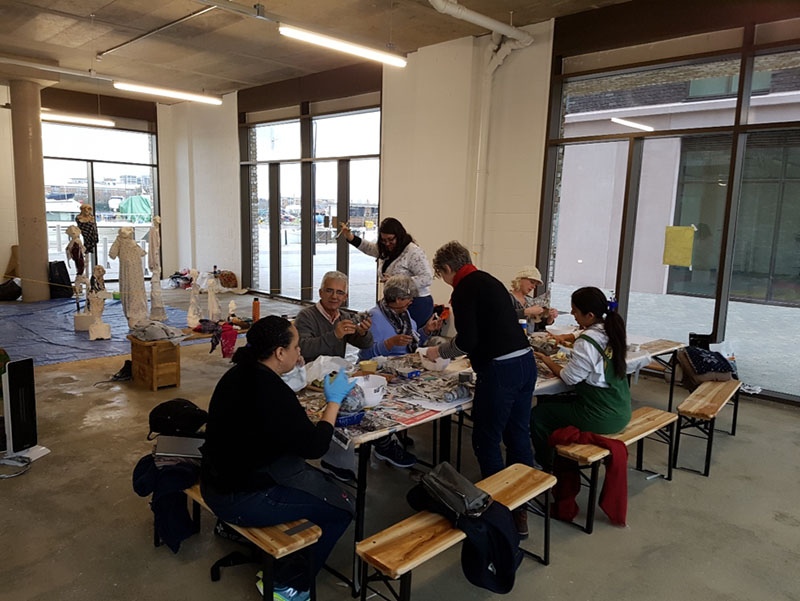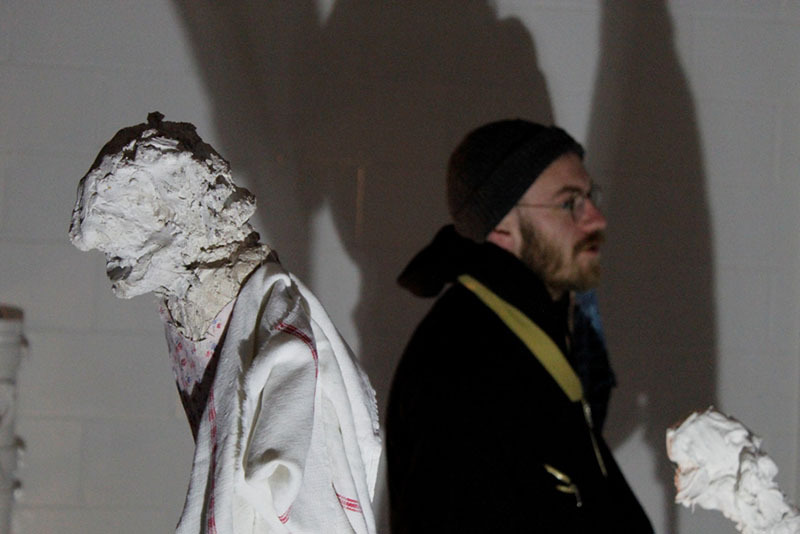by Clémence Hémard-Hermitant
The Art for the Environment International Artist Residency Programme (AER) was launched in 2015 by member of the UAL Research Centre for Sustainable Fashion (CSF) and UAL Chair of Art and the Environment Professor Lucy Orta and coordinated by CSF Associate Curator Camilla Palestra.
Clémence Hémard-Hermitant– was selected for this years’ AER 2018 Residency at at Bow Arts RAW Lab
Here we share Clémence’s residency report:
I was selected for the 9 week art for the environment residency at Bow Arts’ new space in Gallions Reach called R.A.W Labs. It’s a unique space where you feel very disconnected from London, the studio gives onto the water where all sorts of birds cohabitate with the planes from London City Airport.
The space provided was huge, big glass panels letting the light in but also meaning you had to work insight of all the people walking to and from work. You have to be self-sufficient in these type of settings, order your material and just get started. My proposal and my desire with this residency was to be able to make large plaster works inspired by the community in Gallions Reach. It turned out that it would be more complicated than that. As the area is in the middle of being developed, the community isn’t easy of access. Bow Arts has built affordable artist studios which sit below new flats, making for an interesting mix of artists and people working and living together, but my studio was separated from the others making it a little difficult in terms of interaction.
I started to look into the history of the area to understand what it was before and who lived here which I found really interesting:
‘Between 1960 and 1980, all of London’s docks were closed, leaving around eight square miles of derelict land in East London. Unemployment was high, and poverty and other social problems were rife. Efforts to redevelop the docks began almost as soon as they were closed, although it took a decade for most plans to move beyond the drawing board and another decade for redevelopment to take full effect.” maxwatsongeography.wordpress.com
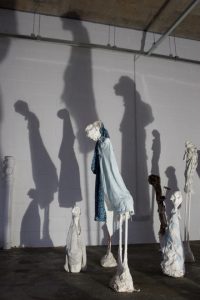 I started working on a medium scale and realised that the lighting and being able to play with shadows was a really interesting dynamic. I needed to build larger sculptures without any welding facilities, so I found a way of making these work in the timeframe I had, with the tools I had access to and could carry to the space myself, I ended up with 21 sculptures.
I started working on a medium scale and realised that the lighting and being able to play with shadows was a really interesting dynamic. I needed to build larger sculptures without any welding facilities, so I found a way of making these work in the timeframe I had, with the tools I had access to and could carry to the space myself, I ended up with 21 sculptures.
My work is in part about communities, how solitude has become a part of city life and how we as a society tackle social and economic conditions. The work produced here in this industrial unit stems from this research into who used to populate this area and the changes that have happened around the Docks. The massive property boom and consequent rise in house prices, luxury executive flats constructed alongside public housing estates, has led to disparities between the new arrivals and the old Docklands residents. Art projects like this at the R.A.W Labs studio which aim to bridge that gap seem essential to a community.
The sculptures made during this period can’t tackle such an in-depth subject entirely but are reminiscent of an imagined population from the area and what they would possibly be saying. They are intended to have humour in their roughness. 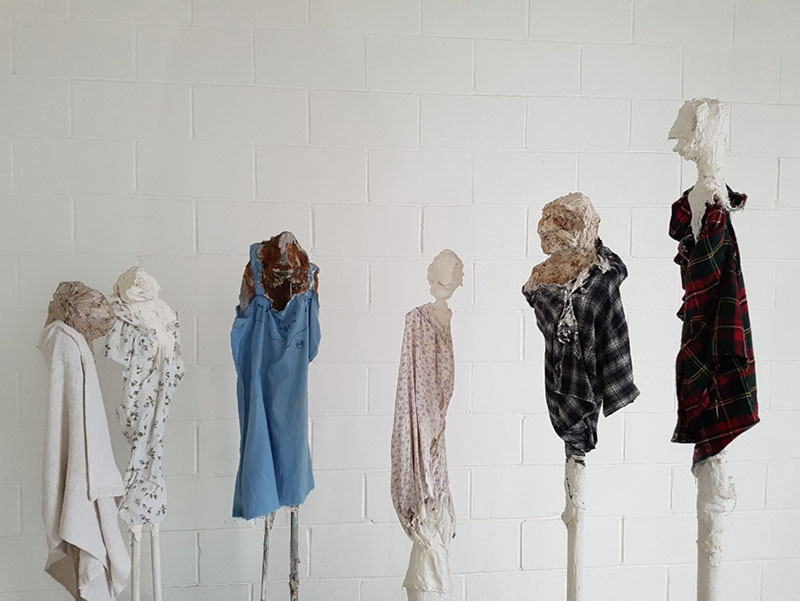
Part of the residency brief was that there needed to be some community engagement and I decided to run a sculpture workshop with papier mache using left over recyclable materials. I did this for five consecutive Sundays and it was an interesting experience. People from all over London came to participate.
It took some time to get the lighting right and playing around with it was fun. It was a great experience to be able to work outside of my studio in such a large space, and to be out of my comfort zone in as much as I didn’t know anyone and it wasn’t my local area. I’d like to pursue the work and to think about adding sound to the installation, there is something very theatrical and I’d like to see how that could possibly bring a different narrative to it.
There was a closing event for the residency and it’s always a good opportunity to hear what people think and feel, it was also great to see people’s shadows interacting with the sculptures and their shadows.



